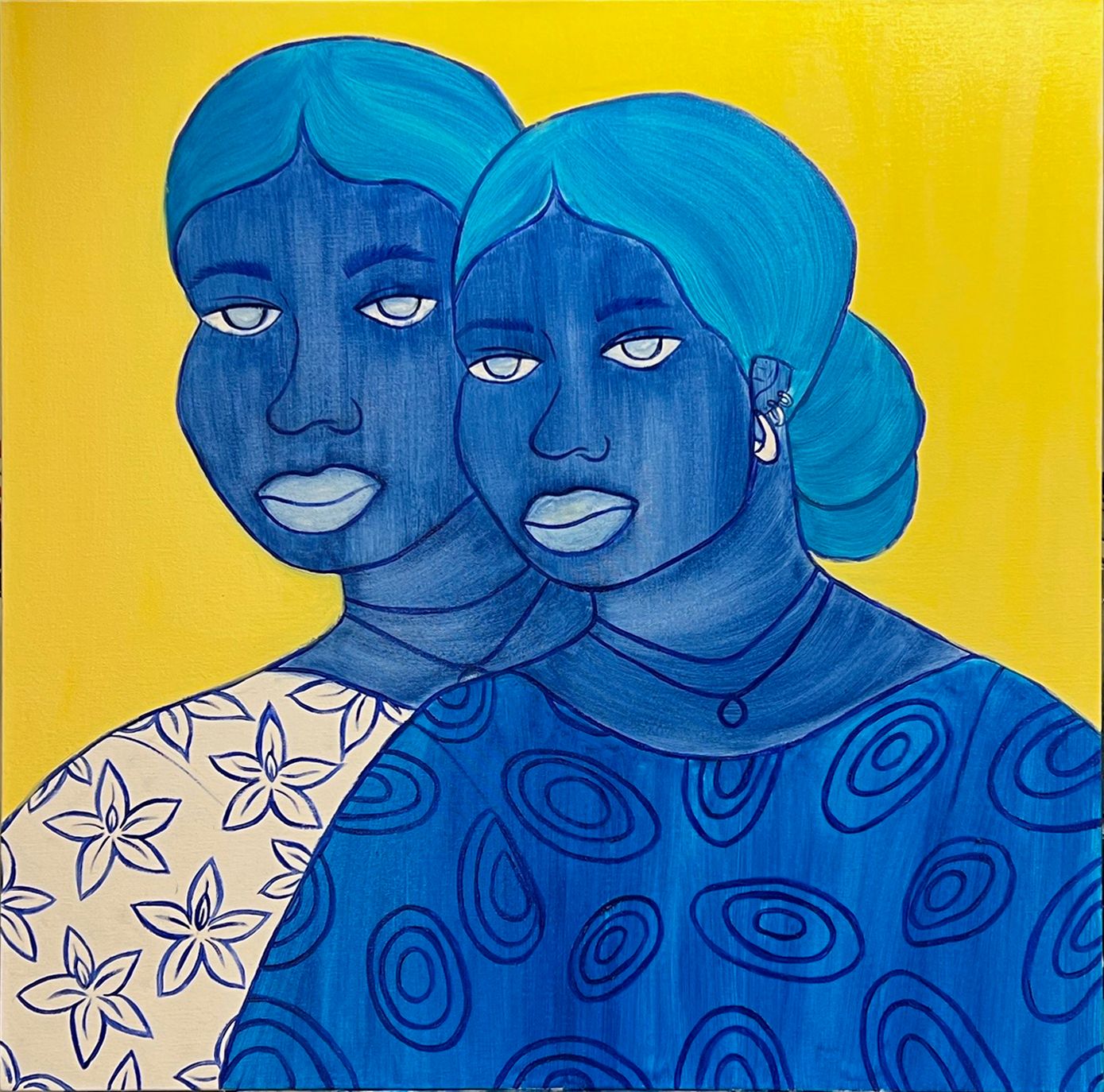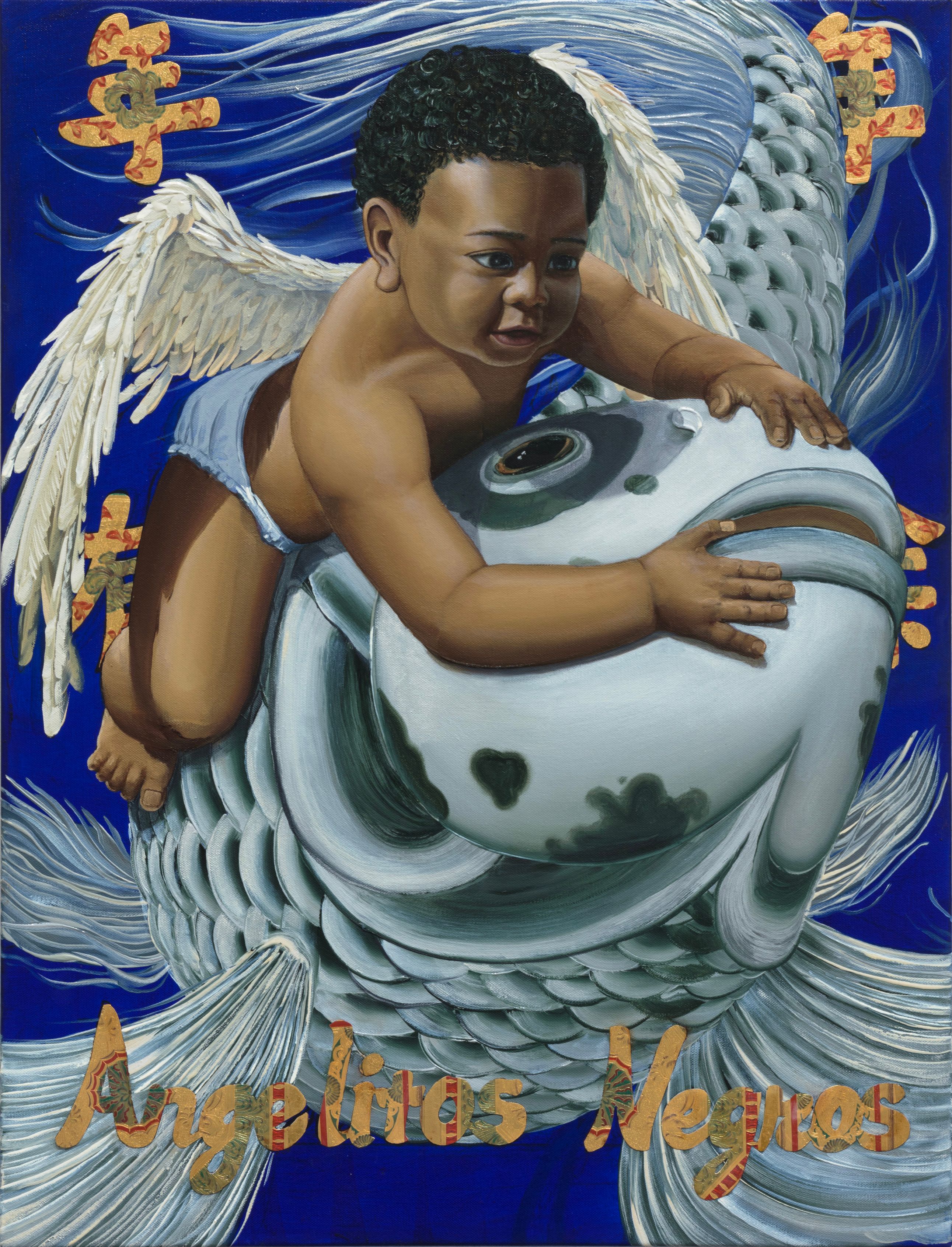
Ghosts of Empires is an on-going investigation into the nature of identity that seeks to highlight oversights in historical narratives that we’ve broadly come to accept via colonisation, shining a positive light on the myriad complexities at play in individuation in an increasingly multi-cultural global society. As such it forwards works by artists postulating new perspectives and ideas that refuse to kowtow to the narrow homogenized tropes of out-dated Imperialist doctrines, which have so often sought to flatten cultural identity. Inspired by the book Ghost of Empire: Britain’s Legacies in the Modern World by Kwasi Kwateng, it’s the brainchild of Ghanaian-American curator and cultural critic Larry Ossei-Mensah, and has so far witnessed hugely successful iterations in both Hong Kong and Ben Brown Fine Arts, London, bringing together contemporary artists hailing from the African and Asian diasporas to present thoroughly modern expressions of 21st century identity that embrace symbolism and signifiers from multiple spaces. With his sights now set on bringing Ghosts of Empires to American shores, the celebrated curator takes time out with Culture Collective to reflect upon the impact the shows have had so far, and tell us why he is driven by a passion to manifest new conversations and open new pathways.
How important is it for you as a curator to champion new and outsider artists?
Well, as a curator, I learned on the fly. I didn’t go to art school, so, I too was an outsider at some point. Over the last 15 years, I've built incredible relationships, and hopefully respect for the work that I do. I've built a lot of trust with artists and galleries and museums, and I think that part of my jam is identifying talent that's not necessarily on the immediate radar and then collaborating with them to present a body of work. It's something I'll continue to do because I think that's what makes it fun and interesting. I think it also maintains a sense of discovery, which I think is a really important component in what I do, particularly with a group exhibition that also includes names that you're more familiar with. I think for new artists to see their work in proximity to recognised masters gives them the incentive to push forward and challenge themselves.

What made you want to undertake the series Ghosts of Empires …
I always thought it would be interesting to evaluate positionality in terms of post-colonialism and empire, and look at different perspectives. I was talking to a number of artists, and one thing that really struck me is that when we think about colonialism, imperialism, the building of empire, and so on, from an African diaspora standpoint, it's always kind of separated from what was happening in other parts of the world such as Asia, where these things were happening at the same time. Initially, I thought it would be an interesting discourse to bring to Hong Kong, to see what happened when you brought these histories together and looked at the similarities in colonial strategies. More recently, we brought the show to Ben Brown in London, which was interesting because at that particular moment there was this huge transition with the Queen’s death, and the radical transition with government, so the exhibition became a great forum to ask timely questions about the role of empire. The scenario playing out in UK politics at the time showed a government could no longer just muscle through its ideology – having an exhibition in that moment that attempted to question power structures in varying ways was interesting. A big part of Ghosts of Empires series is to ask how we as a collective, regardless of where one exists in society, can really work together to develop a more sustainable way forward, and it has allowed a lot of themes to emerge that explore the psychological residue of colonial histories and societal assimilation.

Can you unpack what you mean by psychological residue?
Well, I think it’s about looking at ideas around identity. For example, I have some friends who are older generation who are very steadfast in the stance that they are British, but I'm looking at them, and to me they are clearly Sri Lankan – being able to open up that kind of conversation is absolutely key. When my own family came to the US, for example, it was all about assimilating and fitting in, right? However, there were certain mechanisms in place that didn't necessarily allow for that to genuinely happen. Thankfully, the dialogue around assimilation and identity is much more open now – everyday folks are thinking about how we identify or evaluate our role in society, and how we can play a more active role as citizens, rather than a passive one.
Do you think that paradigm is shifting?
People are taking a lot more agency in defining who they are, and how they exist in the world, in order to navigate these structures that kind of say you are this or that, and this is your role. That psychological component is what is really fascinating to me. France is a good example in this regard, because they've really made an effort to push this idea that if you live in France, and grew up in France, you will see yourself as French, even though you may be Algerian, or you may be Haitian, and so on. They’ve really pushed this narrative and ideology that we're all united as French, but I think, right now, you're seeing people push more and more against that kind of definition.

Let’s talk about some of the artists specifically. Tell me about Maya Cruz Palileo…
Maya is an artist of Filipino heritage that I've admired for a long time, and she has quite a confrontational approach to all of these ideas. I admire the fact that she is tackling all of this head-on, as opposed to holding a more integrationist perspective – for her, it's about how do we shift these histories, reclaim the narrative, and put forward new ideas. In the painting It Bent Like Ice Under Our Weight: Weight, America Land of Promise, The Priest And The Lava, you have this central figure, which is this kind of like a Spanish soldier, because the Spanish were the first to colonise The Philippines, and you get this sense of a powerful endeavour to reclaim the landscape, and reclaim space – also in terms of the issue of climate change, and how our planet is kind of reclaiming space. For me, her work is essentially about an uncompromising reclamation of agency.

There are also far less conformational approaches. I really love King Lojhar (After Tillmans) by Adam DeBoer. Can you tell me more about that image?
Well, Adam is Dutch, and his mother is Indonesian, so he talks a lot about trying to mine and better understand his heritage. He grew up in California, but he spent a lot of time going back to Indonesia. He’s a surfer, so he would use surfing as a way to kind of engage when he would go to these particular islands and build relationships. It's about trying to connect with his heritage, but through the lens of the surf culture he kind of grew up with. It also obviously references a Wolfgang Tillmans image. I think from a colour palette standpoint, it's very west coast, but of course he’s using Batik techniques to make these paintings, so the background connection of transportation of a skill or style that's synonymous with another place is interesting. I like the innovation and approach, and this inherent notion of how culture is fluid.

That fluidity is also at play in the work of Mewell Angel Pao Payano Jr…
Mewell is Afro Caribbean and spent the last two decades in China. He speaks fluent Mandarin and his partner is Chinese. I think that experience kind of piqued my curiosity considering the different themes of Ghosts of Empires. He talks about the fish being this traditional Chinese signifier, but then what's interesting in the works is that the boy is a brown baby – so he’s using this fish as a cultural signifier, and then kind of trying to create a new language, and a new discourse. What's fascinating about his practice, across the board, is that he has grown up a particular way, but has embraced the culture, ideas and symbolism of another space. His work is a great example of the combination of two cultures meeting and then manifesting another aesthetic or conversation. And that is what Ghosts of Empires is about, asking new questions and opening up new pathways.
Credits (Top to Bottom): Abaniko, Maya Cruz Palileo, 2022; Carabaro Mother, Jeanne F Jalandoni, 2021; Two Women (After Frida), Fadekemi Ogunsanya, 2022; It Bent Like Ice Under Our Weight: Weight, America Land of Promise, The Priest And The Lava, Maya Cruz Palileo, 2021; King Lojhar (After Tillmans), Adam de Boer, 2022; Future George's Abundance / Angelitos Negros, Mewell Angel Pao Payano Jr, 2020
View more of the work at Ben Brown Fine Arts